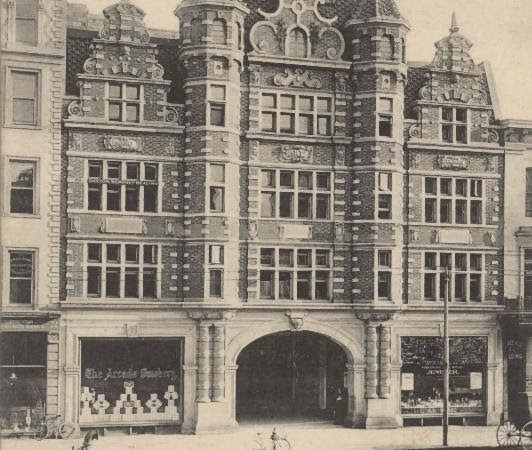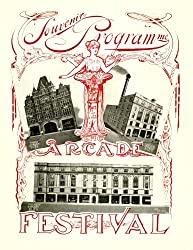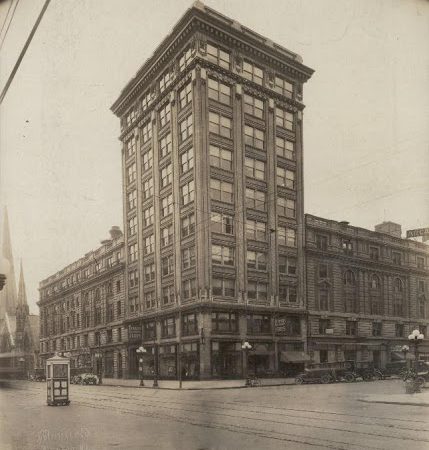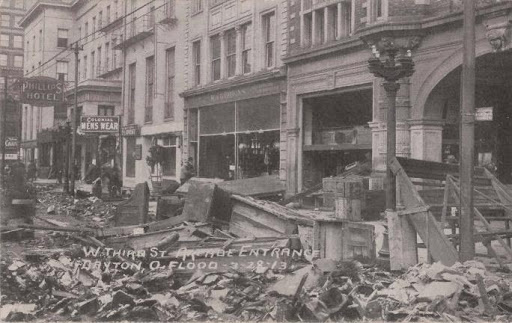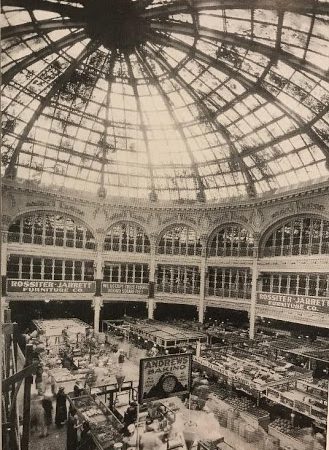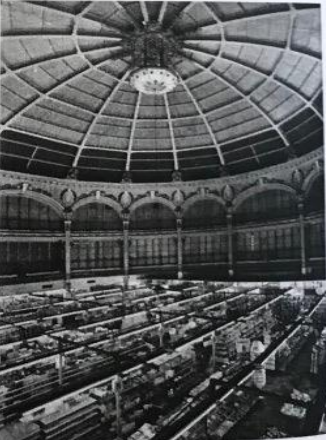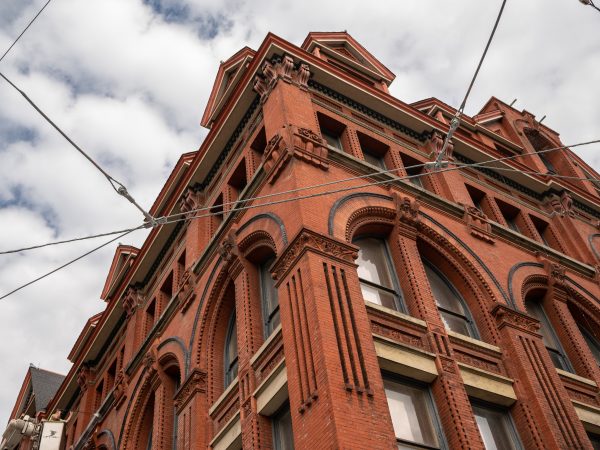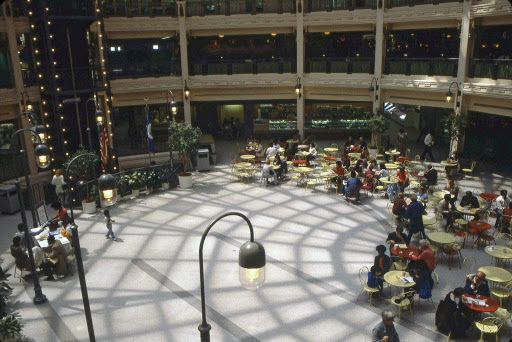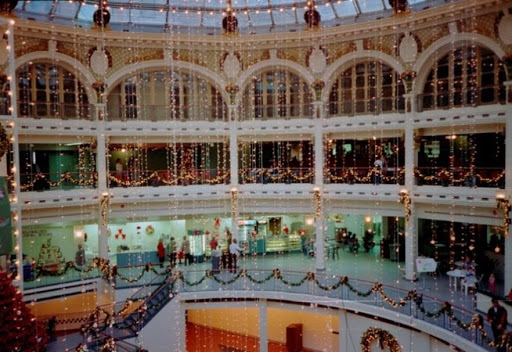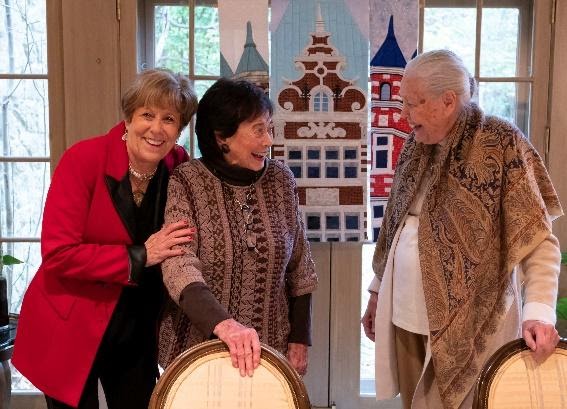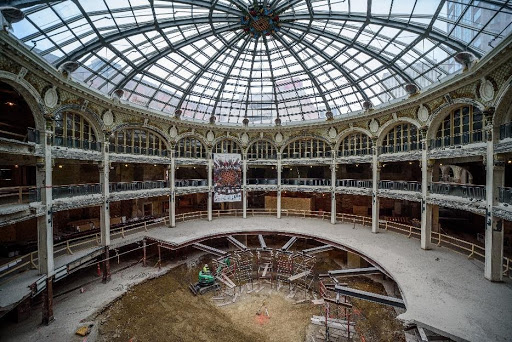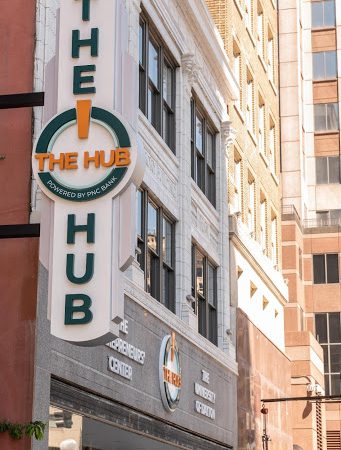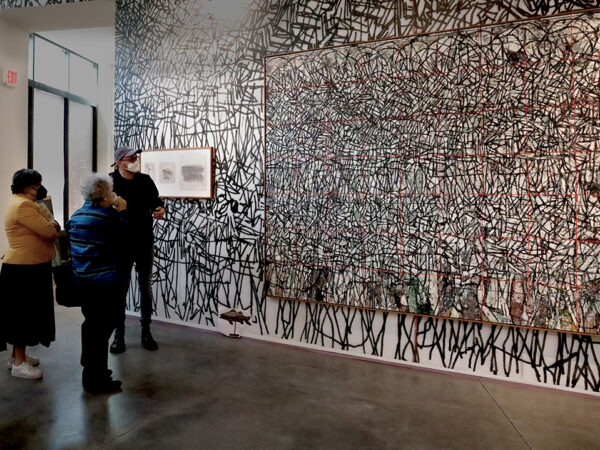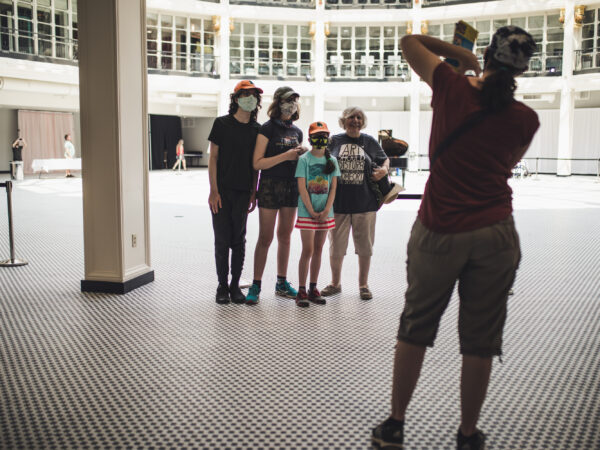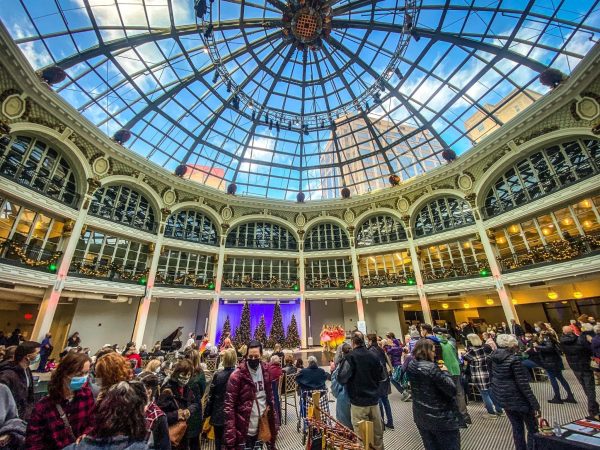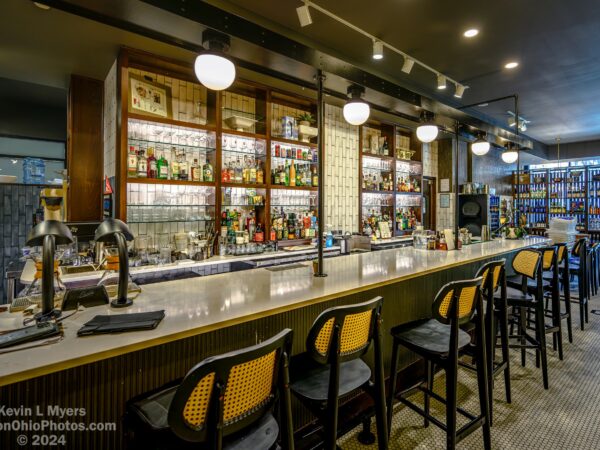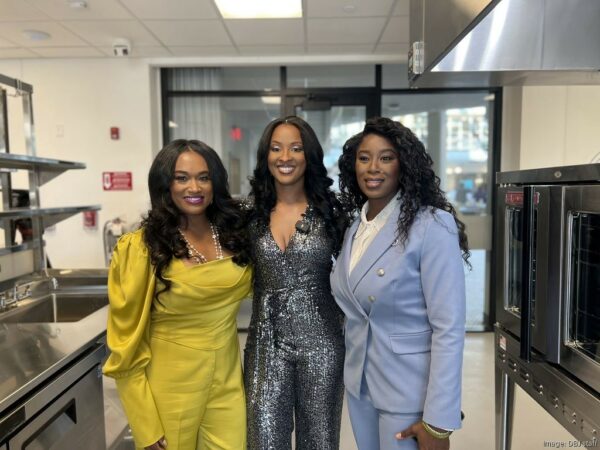ABOUT THE ARCADE
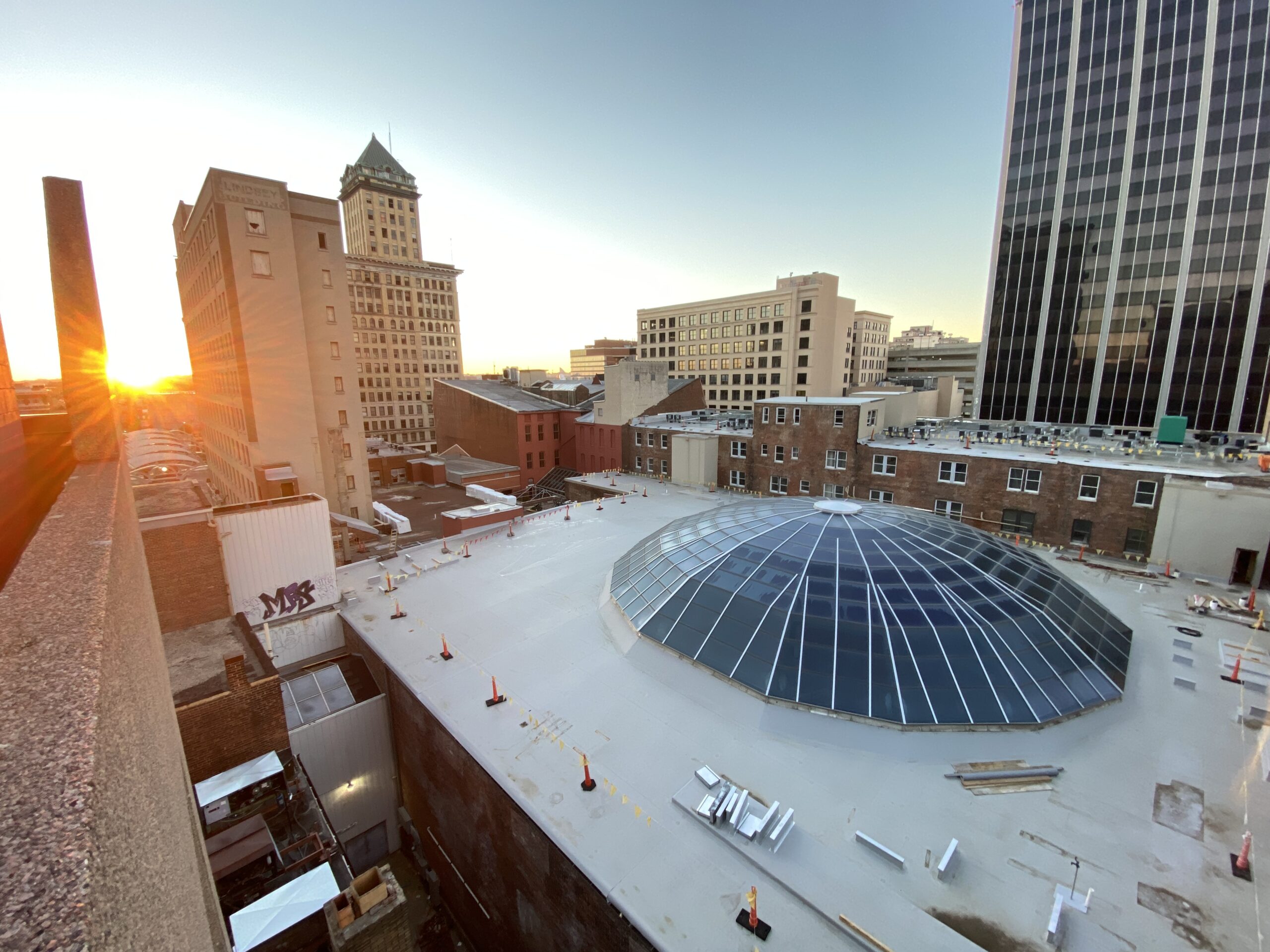
A HISTORIC REDEVELOPMENT
WAKING THE GIANT
The Dayton Arcade, the beating heart of a once vibrant downtown, was shuttered for 30 years. Many attempts were made to renovate the property. All failed. An innovative and daring effort has taken place, led by Baltimore-based Cross Street Partners. Leading urban redevelopment expert Bruce Katz, has called the Dayton Arcade:
"The most transformative project in America."
HERE’S THE STORY:
THE HISTORY OF THE ARCADE
The Arcade is an architecturally elegant complex of nine buildings located in Dayton, Ohio's central business district. Built between 1902 and 1904, it consists of 9 interconnecting buildings topped by a glass-domed rotunda, 70 feet high and 90 feet in diameter. At the time, the Arcade had the latest innovations, including elevators, a power plant, and a cold storage plant. Check out the timeline to see the Arcade’s transformation.
- 1902
- 1904
- 1908
- 1913
- 1925
- 1941
- 1975
- 1980
- 1990 - 1993
- 2007
- 2019
- 2020
- 2021
- 2021
- 2021
- 2023
- 2024
-
1902
Construction Begins
Construction of the Dayton Arcade began in 1902 and was completed in 1904. When completed, the original Arcade Complex consisted of four building, three of them connecting with the Rotunda Building, known as the market house, in the center of the group.
-
1904
Grand Opening
The Arcade’s grand opening day was March 4, 1904. The event was a grand three day festival organized by nearly one thousand women.
-
1908
Commercial Building
The completion of the Commercial Building at the corner of Fourth and Ludlow added a 10-story building to the Arcade complex.
-
1913
Great Miami River Flood
On March 25, 1913, after four days of rain, the Great Miami River overflowed its levees and poured through the downtown section of Dayton at twenty-five miles an hour. People were marooned inside the Arcade’s buildings for three days until the floodwaters receded. This flood’s impact can still be seen around the city of Dayton to this day.
-
1925
The Great Depression
During the dark days of the Great Depression, less than a quarter of the original number of merchants remained in the Rotunda’s marketplace.
-
1941
Wartime Views
The Rotunda’s iconic dome was painted over at the onset of World War II as the Dayton Council for Defense began planning for air raids and blackouts.
-
1975
HIStorically commemorated
The Arcade complex was placed on the National Register of Historic Places.
-
1980
Arcade Expansion
Sections of the Arcade complex reopen to the public as a $15 million redeveloped urban shopping mall. Initial success paved the way for a food court to be created in the lower level of the Rotunda Building.
-
1990-1993
The Arcade Close
As momentum shifted towards suburban redevelopment, the decision was made to close the Arcade. The City of Dayton opened the Arcade for a seasonal sales event known as Holly Days in 1992 and 1993, but this event did not draw enough interest to reopen the Arcade on a permanent basis.
-
2007
Friends of the Dayton Arcade
Friends of the Dayton Arcade was formed to generate interest among developers to renovate the historic complex.
-
2019
Dayton Arcade Partners
The complex was purchased by a redevelopment coalition known as Dayton Arcade Partners. These investor members included Cross Street Partners, McCormack Baron Salazar, The Model Group, and Structural Technologies. Together, they assembled a capital stack almost $100 million and construction began.
-
2020
First Certificates of Occupancy
The first certificates of occupancy were issued, with Arcade Innovation Hub, a joint venture between the University of Dayton and the Entrepreneurs’ Center becoming the first anchor tenant to take occupancy of nearly 95,000 square feet.
-
2021
The Contemporary Dayton
The popular local contemporary art center hosts its inaugural public exhibition in its Arcade gallery space at 25 W. Fourth St.
The Co produces and presents original exhibitions and programs, art events, community partnerships, and artist opportunities.
-
2021
Arcade Festival
Additional commercial and residential tenants continue to move in, with Arcade Festival set to welcome the public into the renovated space in late summer.
-
2021
HOLLY DAYS AT THE ARCADE
The popular holiday festival from 1922 and 1993 returns to the Dayton Arcade, with over 6,000 attendees and 30 participating small business vendors.
-
2023
Restaurant & Retail
The Arcade’s full-service restaurants, Gather by Ghostlight and Est! Est!! Est!!! open to the public by September 1.
-
2024
6888 Kitchen
The 6888 Kitchen Incubator announces its soft opening on February 29. This event marks the commencement of a centralized, modern facility for under-resourced entrepreneurs in the Dayton region.
THE ARCADE VISION: Creating Place
INNOVATION INCUBATOR
The Arcade is a collaborative center of big thinkers, dreamers, and doers. Anchored by The Hub Powered by PNC, we are an incubator for unique ideas and opportunities to put Dayton at the forefront of tomorrow's big innovations.
ARTS & CULTURE CENTER
From our Arts Lofts residential apartments for creatives, to our partnerships with Culture Works, WYSO, and The Contemporary, The Arcade is dedicated to nurturing Dayton’s bright creative future.
A COMMUNITY WITHIN A CITY
The Arcade is a primary catalyst for transforming the neighborhood surrounding the Arcade. A component of “The Nine”, a nine-block redevelopment strategy led by the City, the Arcade is a driver of this change, while the Levitt Pavilion is its center.
PHASE 1
THE SOUTH ARCADE
Entrance At 35 W. 4th Street
Cross Street Partners, Model Group, and McCormack Baron Salazar are redeveloping the historic Dayton Arcade, a collection of nine buildings totaling over 500,000 SF in the heart of downtown Dayton’s central business district. The full development plan will recast the Arcade in much the same way it was initially developed in the first decade of the 20th century—with a mix of retail, offices, event space and housing. The first phase of the project, the South Arcade, will consist of an innovation center with the University of Dayton as a higher education partner. Included in the South Arcade are 110-unit residential LIHTC and market rate development for artists and creative entrepreneurs, a shared commercial kitchen program, multiple event spaces, and food and beverage-focused retail.
PHASE 2 - OPENING 2024
THE NORTH ARCADE
Third Street Entrance
The second phase, the North Arcade, will include a marketplace retail and restaurant environment as well as a 94-room Hilton Garden Inn.
DEVELOPMENT TEAM

CROSS STREET PARTNERS
Cross Street Partners is a vertically integrated real estate company exclusively focused on re-building communities by creating vibrant urban mixed-use neighborhoods built on a foundation of innovation and entrepreneurial activity. VIEW WEBSITE

MODEL GROUP
The Model Group is an integrated property development, construction, and management company with a passion for revitalizing urban neighborhoods. The Cincinnati-based company is a recognized leader in historic preservation, mixed-used development, senior living communities, and affordable housing that is indistinguishable from market-rate housing. The Model Group is headquartered in Cincinnati’s Over the Rhine neighborhood, having played a lead role in the nationally acclaimed resurrection of this historic community. VIEW WEBSITE

MCCORMACK BARON SALAZAR
McCormack Baron Salazar is the nation’s leading for-profit developer, manager, and asset manager of economically integrated urban neighborhoods. Since 1973, the St. Louis-based firm has been an innovator in community development and urban revitalization in 45 cities, having built more than 21,000 high-quality homes for families, children, seniors and veterans. VIEW WEBSITE
